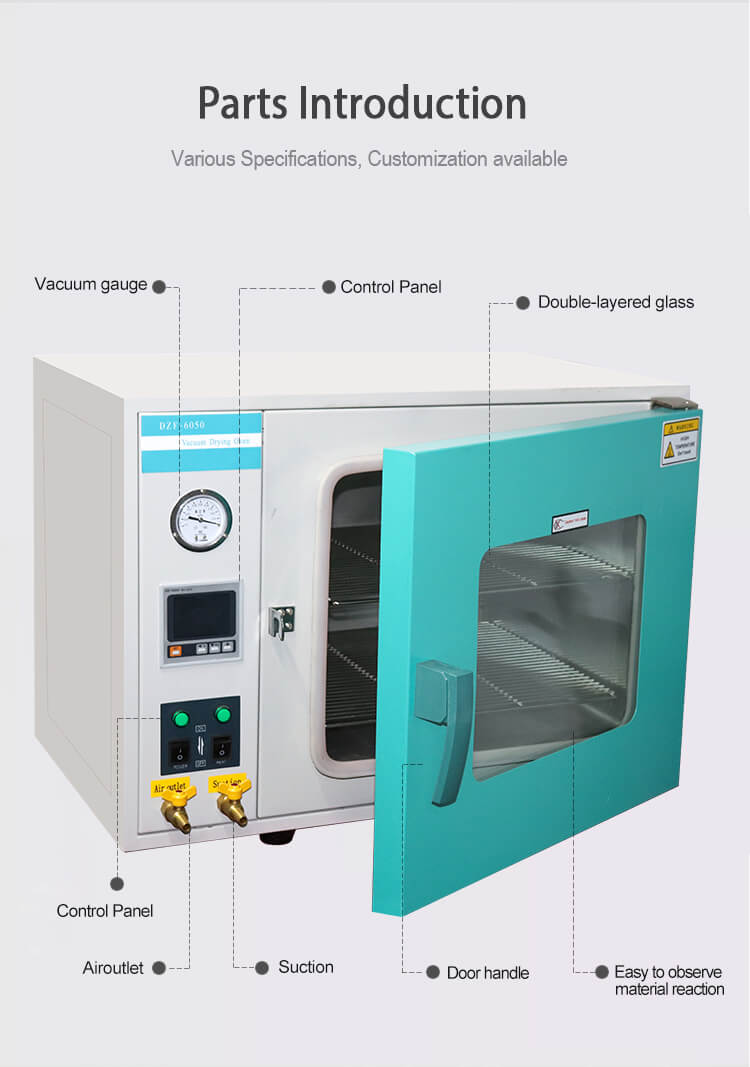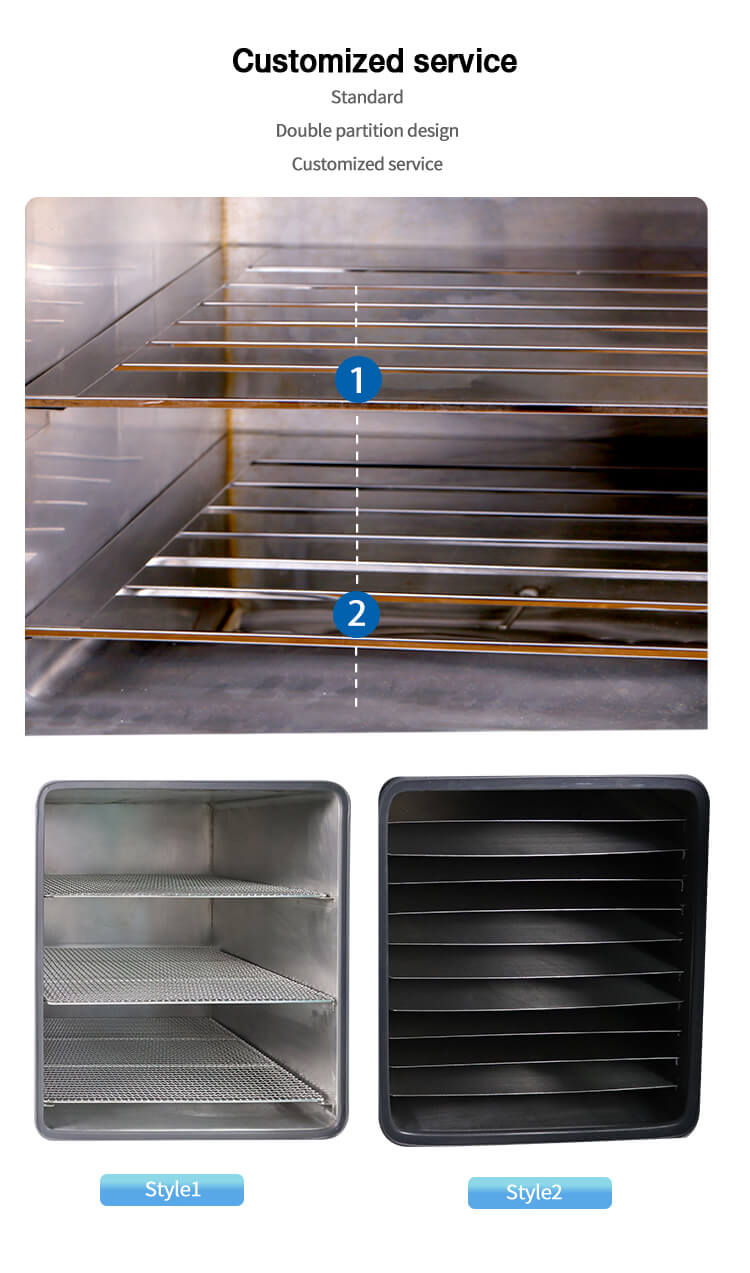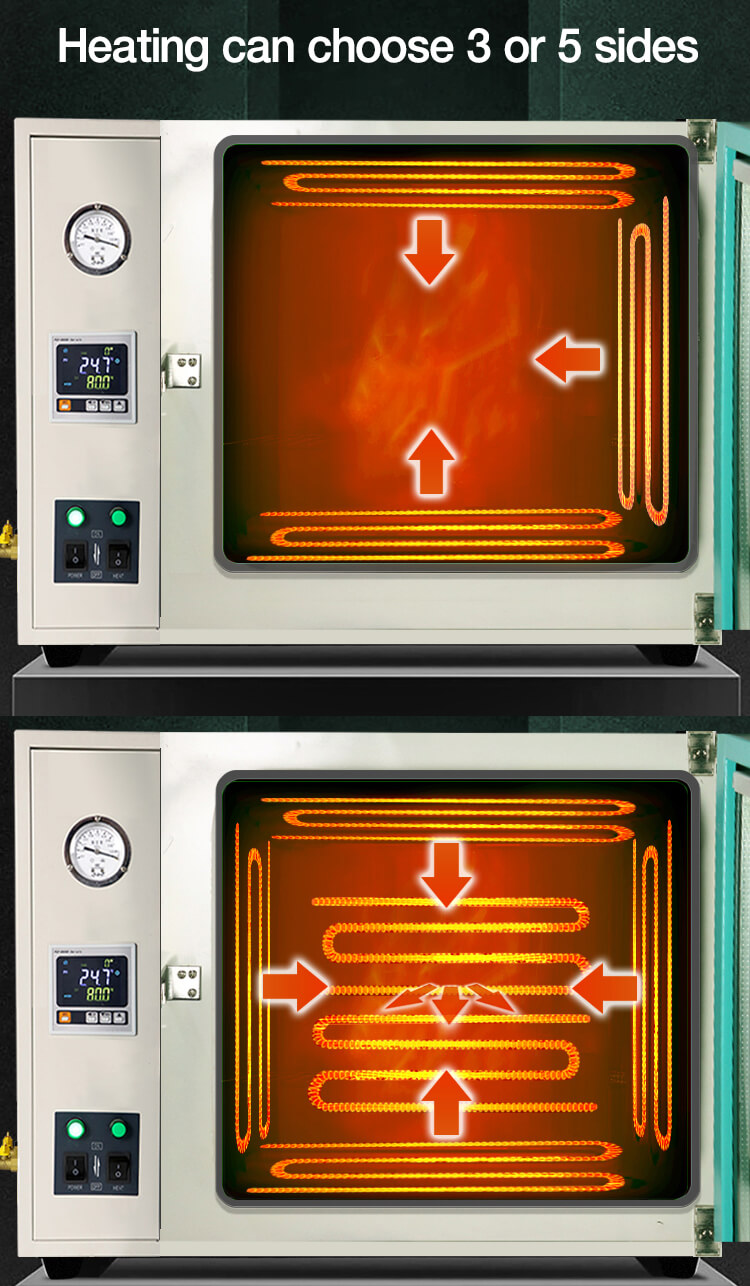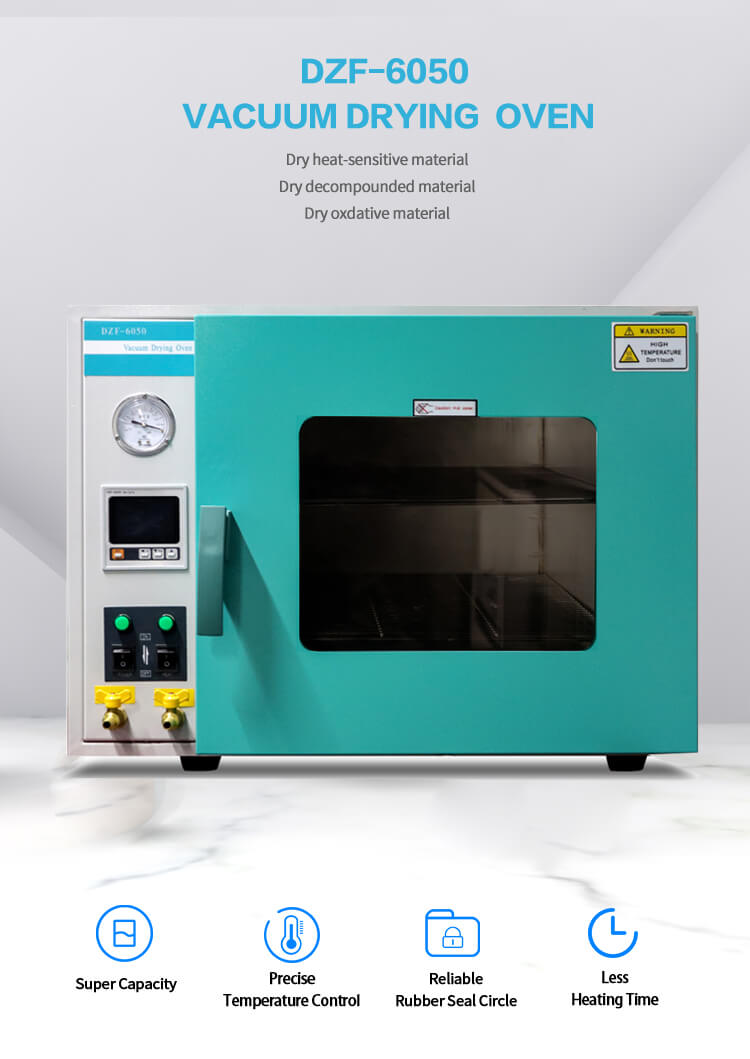Imagine a machine that can dry materials without exposing them to high temperatures and oxygen. This is exactly what a high temperature vacuum oven can do. With its unique capabilities, this cutting-edge device has revolutionized the way industries process and preserve various products.

Traditional drying methods involve the use of intense heat, which can sometimes be detrimental to certain materials. High temperatures can cause chemical reactions, alter the molecular structure, or even burn the substances being dried. In addition, exposing materials to oxygen can lead to oxidative reactions, degradation, and spoilage.
A high temperature vacuum oven overcomes these limitations by operating under reduced atmospheric pressure. By removing air and creating a vacuum environment, the oven prevents oxidation and minimizes the risks associated with high temperatures. This technique ensures that materials are dried gently, retaining their intrinsic properties, and resulting in higher quality products.

The high temperature vacuum oven offers precise temperature control, enabling users to set and maintain specific temperatures suitable for different materials. This feature is indispensable for industries that work with delicate or heat-sensitive substances. Advanced microprocessor-based temperature controllers monitor and adjust the temperature inside the oven, ensuring accurate and consistent drying conditions.
Industries such as food processing, pharmaceuticals, electronics, and material science greatly benefit from high temperature vacuum ovens. In the food industry, for example, these ovens prove invaluable for the dehydration of fruits, vegetables, and various food products. By drying under vacuum conditions, the flavors, textures, and nutritional content of the food are preserved, resulting in longer shelf life and improved taste.
Pharmaceutical companies utilize high temperature vacuum ovens for the drying of drugs, herbs, and plant extracts. The controlled drying process ensures that the active compounds remain intact, maximizing the effectiveness of medications and herbal remedies. Electronics manufacturers employ these ovens to remove moisture from sensitive components and prevent corrosion or damage during soldering processes.
Material science labs extensively use high temperature vacuum ovens for research and experimentation. These ovens are crucial for processes such as annealing, brazing, sintering, and heat treatment of various materials, including metals, ceramics, and polymers. The vacuum conditions provide a clean and controlled environment, minimizing contamination and enabling precise material transformations.

High temperature vacuum ovens have undoubtedly revolutionized the drying process across multiple industries. By combining gentle and precise temperature control with a vacuum environment, these ovens produce superior results while safeguarding the integrity of the materials being dried. As technology continues to advance, we can expect even more remarkable innovations in the field of vacuum drying.






